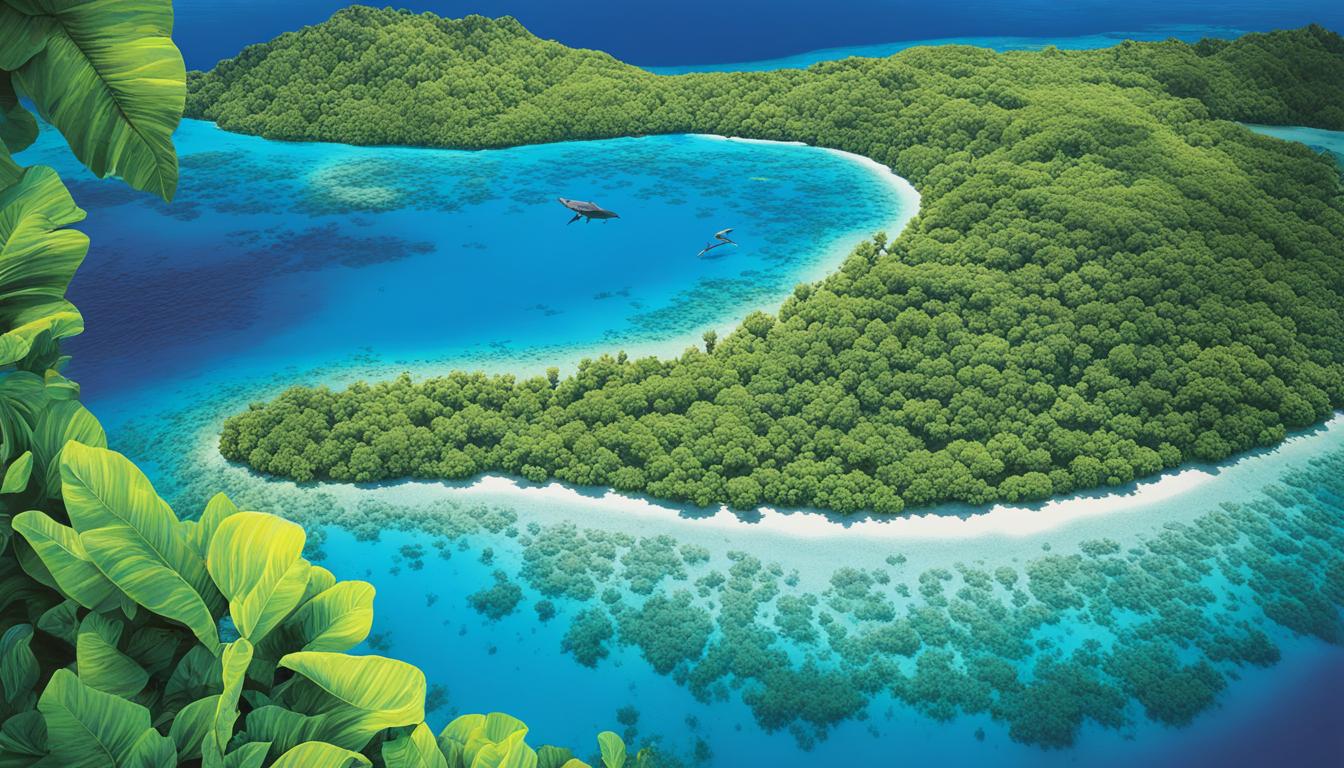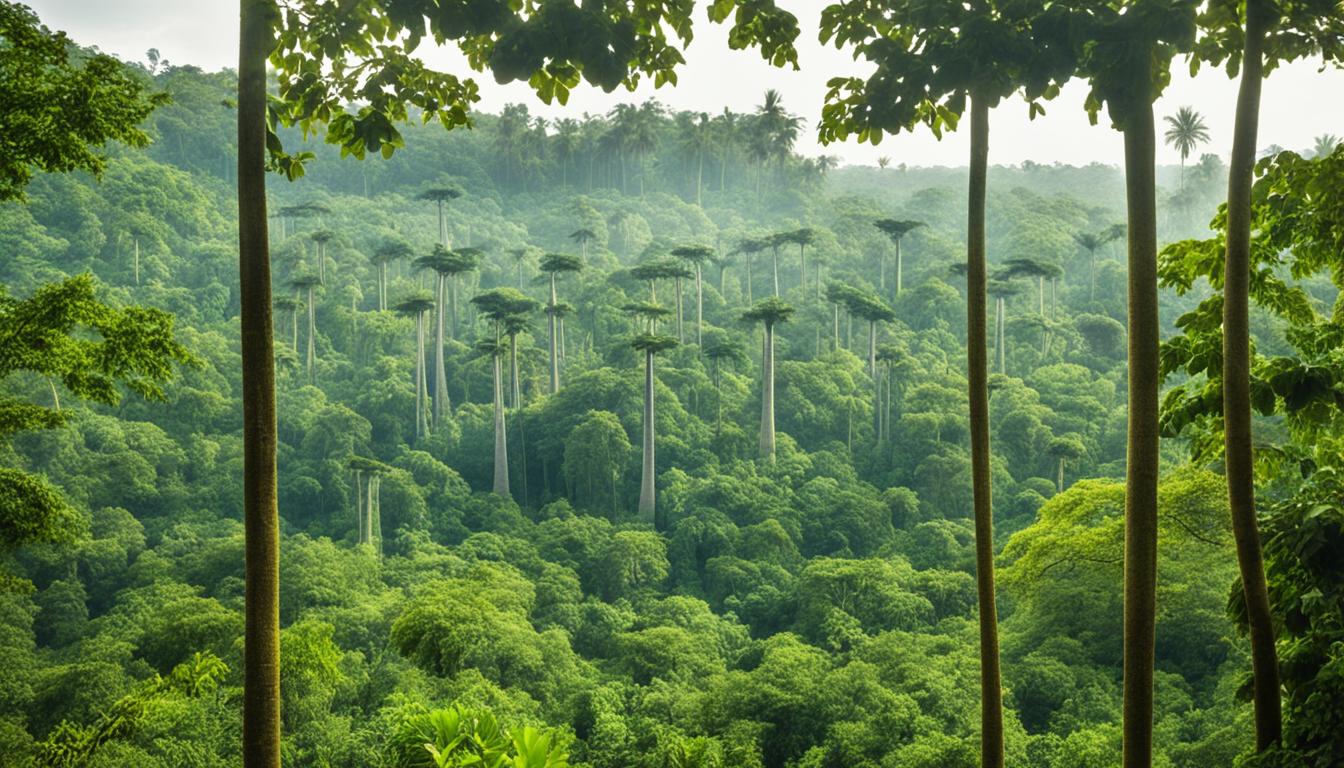Finland Biodiversity: Animal and Plant Species and What Is Under Threat
Did you know that nearly 12 percent of species in Finland are currently considered threatened? That’s approximately 2,667 species at risk of disappearing from the country altogether. This startling statistic highlights the magnitude of the biodiversity loss that Finland is currently facing. The decline in species diversity not only has negative impacts on the environment but also limits nature’s ability to adapt to the challenges posed by climate change. In order to tackle this issue, it is crucial to understand the threats these species face and the efforts being made to protect and manage them and their habitats.
Key Takeaways:
- Finland has nearly 2,667 species that are currently threatened with extinction.
- Biodiversity loss in Finland has negative impacts on the environment and limits nature’s ability to adapt to climate change.
- Forests and cultural environments are particularly affected by species decline.
- Efforts are being made to protect and manage threatened species and their habitats in Finland.
- Nordic nature protection is playing a vital role in environmental sustainability in the region.
The Extent of Threatened Species in Finland
According to the “Red list of Finnish species” (2019), almost 12 percent of the species analyzed in Finland are considered threatened. This means that a total of 2,667 species in the country are facing the risk of extinction. The evaluation of threatened species is conducted every ten years to assess their conservation status.
The threat level varies among different categories, with critically endangered species being the most severe and vulnerable species being the least severe. This classification helps prioritize conservation efforts and allocate resources effectively.
Among the affected species, birds and mosses are particularly at risk, with approximately one-third of their species considered threatened. This highlights the importance of protecting their habitats and implementing conservation measures to ensure their survival.
Almost 12 percent of the species analyzed in Finland are threatened, accounting for 2,667 species at risk of extinction.
The proportion of threatened species in Finland has remained consistent over time, indicating that conservation efforts need to be intensified to reverse this trend. The Red List of Finnish species acts as a valuable tool in identifying the species most in need of conservation attention.
The Red List of Finnish Species (2019) Highlights:
- Total threatened species: 2,667
- Critically endangered species: highest threat level
- Vulnerable species: least severe threat level
- Birds and mosses: approximately one-third of species threatened
It is crucial to address the threats faced by Finland’s biodiversity to ensure the long-term survival of these species and maintain the ecological balance. Conservation efforts, research, and collaborations between environmental organizations, government agencies, and local communities are essential in protecting and preserving the rich biodiversity of Finland.
Threats to Biodiversity in Finland
The poor status of biodiversity in Finland is mainly attributed to changes in habitats. Agricultural areas and forestry practices have significantly impacted forest species, which make up a substantial portion of threatened species in Finland. Changes in cultural environments, such as the loss of traditional farming practices and the intensification of land use, have also contributed to the decline of species in these areas. The overall trend is negative, with nearly all habitats experiencing a decrease in the proportion of threatened species.
One of the major biodiversity threats Finland faces is the changing habitat caused by agricultural changes. The conversion of natural habitats into agricultural land has resulted in the loss of vital ecosystems and has severely impacted the diversity of species. Forest ecosystem changes also pose a significant threat to biodiversity in Finland. Deforestation and unsustainable forestry practices have led to the destruction of habitats and the displacement of forest-dependent species.
Another significant threat to biodiversity in Finland is the degradation of the cultural environment. The loss of traditional farming practices and the intensification of land use have resulted in the disappearance of important habitats for many species. The degradation of cultural landscapes impacts both the flora and fauna diversity, leading to a decline in overall biodiversity.
The poor status of biodiversity in Finland is mainly attributed to changes in habitats. Agricultural areas and forestry practices have significantly impacted forest species, which make up a substantial portion of threatened species in Finland. Changes in cultural environments, such as the loss of traditional farming practices and the intensification of land use, have also contributed to the decline of species in these areas. The overall trend is negative, with nearly all habitats experiencing a decrease in the proportion of threatened species.
Threats to Biodiversity in Finland:
- Changing habitats caused by agricultural changes
- Forest ecosystem changes due to deforestation and unsustainable forestry practices
- Degradation of the cultural environment through the loss of traditional farming practices and intensification of land use
The protection and conservation of biodiversity in Finland are crucial to counter these threats. Efforts should focus on sustainable agriculture practices, responsible forestry management, and the preservation of cultural landscapes. By addressing these challenges, Finland can work towards the preservation and restoration of its diverse ecosystem.
| Biodiversity Threats in Finland | Primary Causes |
|---|---|
| Agricultural changes | Conversion of natural habitats into farmland |
| Forest ecosystem changes | Deforestation and unsustainable forestry practices |
| Cultural environment degradation | Loss of traditional farming practices and intensification of land use |
The table above summarizes the primary causes of biodiversity threats in Finland. Understanding these causes helps in formulating effective strategies to mitigate the negative impacts and promote biodiversity conservation.
The image above visually represents the challenges that Finland’s biodiversity faces. It serves as a reminder of the importance of conservation efforts and the need for sustainable practices to protect and preserve the country’s diverse flora and fauna.
Habitat-specific Threats in Finland
Different habitats in Finland face specific threats to their biodiversity. The preservation of threatened species by habitat is crucial to maintain the delicate balance of Finland’s ecosystems. Let’s take a closer look at some of these habitats and the challenges they encounter.
Forest Species
Forests in Finland are home to a wide variety of species, making them critical habitats for biodiversity. Unfortunately, forest ecosystems are under threat, endangering the survival of many forest species. Deforestation, intensive logging practices, and the expansion of urban areas pose significant risks to these habitats. Climate change-induced disturbances such as wildfires and pest infestations further exacerbate the situation.
Cultural Environment Species
Finland’s cultural environments, including built-up areas and agricultural lands, are also facing significant threats. The loss of traditional farming practices and the intensification of land use have led to the disappearance of crucial habitats, impacting the survival of cultural environment species. As urbanization continues to expand, the available land for these species diminishes, pushing them towards the brink of extinction.
Fells, Rock Outcrops, Shores, Aquatic Habitats, and Mires
The unique geological features of Finland, such as fells, rock outcrops, shores, aquatic habitats, and mires, also harbor threatened species. These habitats provide essential niches for a diverse range of flora and fauna. However, increased human activities, habitat degradation, and climate change have placed these fragile ecosystems at risk. Of these habitats, fells stand out as having the highest proportion of threatened species, highlighting the urgent need for conservation efforts in these areas.
It’s crucial to address the habitat-specific threats to ensure the protection and survival of Finland’s biodiversity. By implementing conservation strategies, promoting sustainable land use practices, and raising awareness about the importance of preserving these habitats, we can work towards safeguarding the threatened species and maintaining the delicate balance of Finland’s ecosystems.
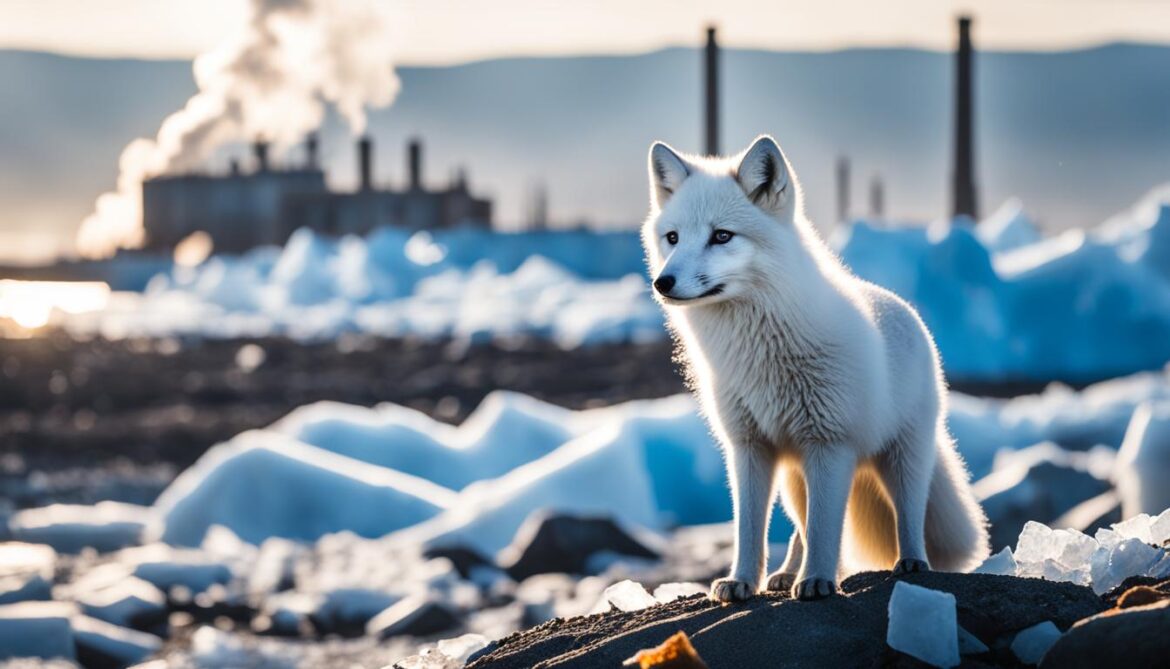
Climate Change Impact on Finland’s Biodiversity
Climate change has significant implications for Finland’s biodiversity. While some species may benefit from a warmer climate and extend their distribution range, others, particularly those adapted to specific cold conditions or with limited migration possibilities, may face increased risks of extinction. The overall number of species in Finland is expected to increase, but the composition and distribution patterns may change. Climate change affects the timing of animal and plant reproduction, migration, and the length of the growing season. It also interacts with other factors such as habitat shifts and the spread of invasive species.
One of the key impacts of climate change on Finland’s biodiversity is the vulnerability of species to changing habitats. As temperatures rise, certain habitats may become unsuitable for species adapted to colder conditions. This can result in the loss of suitable habitat for these species, leading to a decline in their populations and increased extinction risks. On the other hand, a warmer climate can also lead to habitat shifts, with some species expanding their ranges into new areas.
Migratory patterns are also influenced by climate change. Changes in temperature and precipitation can alter the timing and routes of animal migrations, affecting the availability of food and breeding grounds along their journey. This can disrupt the natural migration patterns of species and impact their ability to survive and reproduce.
Climate change is like a domino effect on biodiversity. It triggers a series of changes in ecosystems, from habitat shifts to alterations in species composition and distribution. It’s crucial to understand and address these impacts to protect Finland’s unique flora and fauna.
Additionally, climate change can exacerbate other existing threats to biodiversity. For example, habitat degradation caused by human activities, such as deforestation and pollution, can be amplified by climatic changes. The spread of invasive species, which can outcompete native species for resources, can also be facilitated by a changing climate.
| Climate Change Impacts on Finland’s Biodiversity | Potential Consequences |
|---|---|
| Biodiversity Vulnerability | Increased risk of extinction for species adapted to specific cold conditions or with limited migration possibilities. |
| Habitat Shifts | Changes in suitable habitats for species, resulting in shifts in species distribution. |
| Extinction Risks | Loss of suitable habitat and increased vulnerability of species to climate-related changes. |
| Migration Patterns | Altered timing and routes of animal migrations, impacting breeding and foraging opportunities. |
It is essential to incorporate climate change considerations into biodiversity conservation strategies. By understanding the vulnerabilities of different ecosystems and species, effective adaptation measures can be implemented. This includes creating protected areas that ensure the survival of vulnerable species, restoring degraded habitats, and promoting sustainable land-use practices.
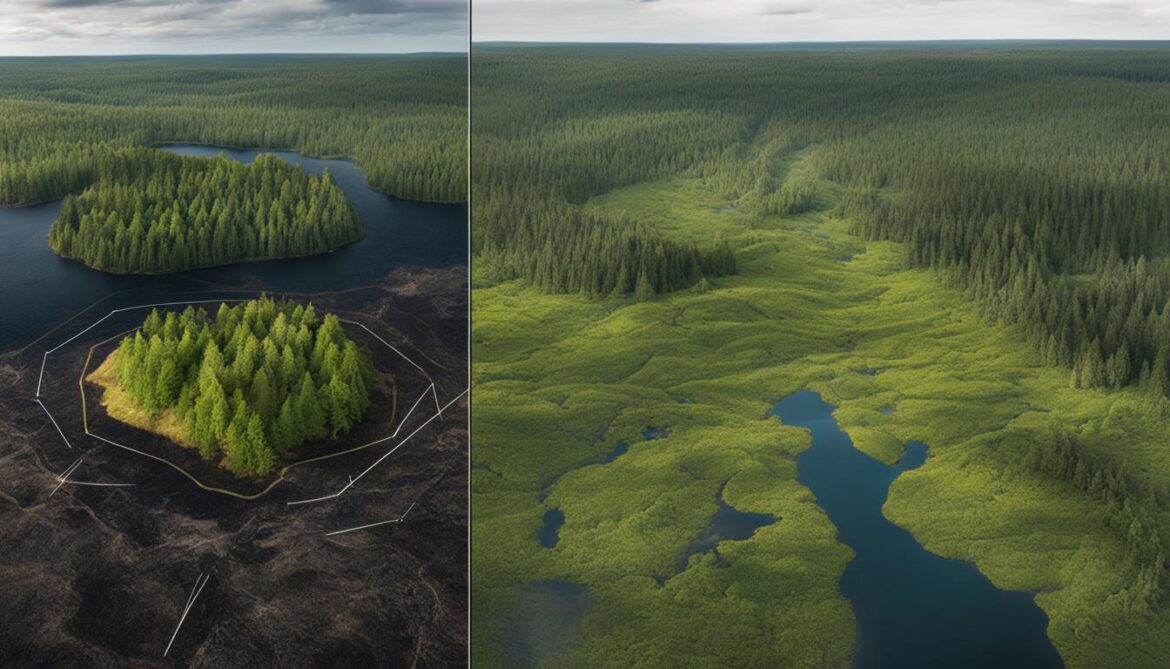
Biodiversity Conservation Efforts in Finland
Finland recognizes the crucial importance of preserving its rich biodiversity and has implemented various measures to protect and conserve its natural heritage. Through the establishment of protected areas and the implementation of conservation strategies, Finland strives to ensure the sustainable use of its diverse flora and fauna.
At the forefront of these efforts is the National Strategy for Biodiversity, a comprehensive plan that aims to halt biodiversity loss in Finland. Adopted for the period 2012-2020, the strategy sets ambitious targets to protect and restore ecosystems, species, and genetic diversity. Its ultimate goal is to secure a favorable status for Finland’s biodiversity by 2050.
“Preserving Finland’s biodiversity is not only essential for the health of our ecosystems but also for our quality of life and the well-being of future generations.”
The National Strategy for Biodiversity focuses on three primary conservation strategies:
- Creating Sufficient Networks of Protected Areas: By expanding the network of protected areas, Finland aims to provide safe havens for a wide range of species and habitats. Protected areas help safeguard critical ecosystems and act as corridors for species movement, promoting ecological interconnections and gene flow.
- Promoting Ecological Interconnections: Recognizing the importance of interconnected habitats, Finland emphasizes the need to improve ecological connectivity between different landscapes. This allows for the unhindered movement of species and enables genetic exchange, supporting long-term population viability and ecosystem resilience.
- Fostering International Cooperation: Finland actively collaborates with international organizations, neighboring countries, and the European Union to align its biodiversity conservation efforts with global objectives. By sharing knowledge and best practices, Finland contributes to the collective mission of halting biodiversity loss on a global scale.
Finland’s commitment to biodiversity conservation aligns with the European Union’s target of halting the loss of biodiversity by 2030. By implementing the National Strategy for Biodiversity and actively engaging in international initiatives, Finland strives to protect its unique natural heritage for future generations.
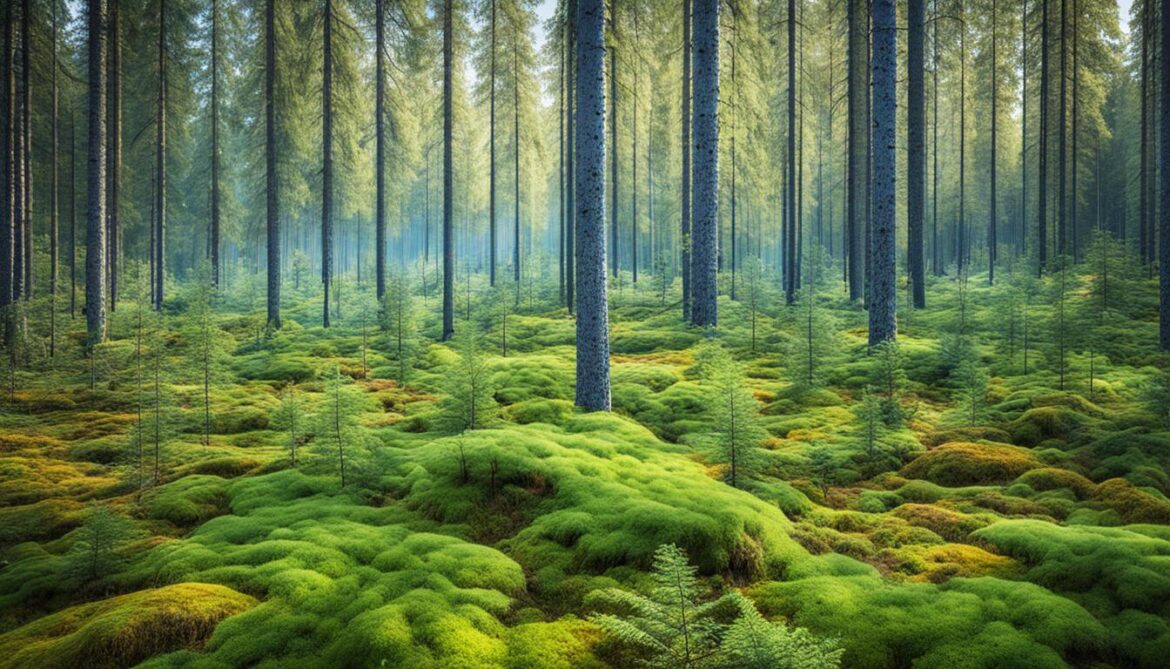
| Action | Achievements |
|---|---|
| Expansion of Protected Areas | Increased the size of protected areas by 13% since 2012 |
| Restoration of Degraded Habitats | Successfully restored over 500 hectares of degraded wetlands |
| Enhancement of Ecological Connectivity | Implemented wildlife corridors and created ecological stepping stones to facilitate species movement |
| Conservation Education and Awareness | Developed educational programs and campaigns to raise public awareness about the importance of biodiversity |
Positive Trends and Challenges in Finland’s Biodiversity
Finland’s biodiversity faces numerous challenges, but there are also positive trends that provide hope for the preservation of its unique ecosystems.
Positive Biodiversity Trends
Forest Biodiversity: While forest biodiversity in Finland is still declining, the rate of decrease has slowed down. Conservation efforts and sustainable forest management practices have contributed to the preservation of diverse species and habitats.
The decline in the use of fertilizers and pesticides has yielded positive results. This shift towards more sustainable agricultural practices has led to the recovery of certain populations and a more balanced distribution of wildlife species. It highlights the importance of reducing chemical inputs and promoting environmentally friendly farming methods.
“Preservation of Mires: Despite facing threats from human activities, mires in Finland have been successfully preserved. These unique wetland habitats provide essential ecological functions, serving as important carbon sinks and supporting a wide range of plant and animal species.”
Nordic nature protection initiatives have played a significant role in promoting environmental sustainability in Finland. The collaborative efforts of Finland and its neighboring Nordic countries have resulted in the protection and conservation of valuable natural areas, ensuring the long-term viability of biodiversity.
Challenges Faced
Despite the positive trends, Finland’s biodiversity still faces significant challenges. Habitat destruction due to urbanization and intensive agriculture continues to threaten the survival of many species. Climate change poses additional risks, affecting the distribution and behavior of flora and fauna.
Human activities, such as deforestation and pollution, contribute to the degradation and fragmentation of natural habitats. These challenges require continuous efforts and a comprehensive approach to ensure the long-term conservation of Finland’s diverse ecosystems.
Biodiversity in Finland: A Precious Resource
Finland’s biodiversity is a precious resource that needs to be protected and conserved for future generations. It provides valuable ecological services, supports local economies, and enriches the lives of citizens and visitors alike. Through sustainable practices, increased awareness, and collaborative efforts, Finland can maintain and enhance its rich natural heritage.
| Biodiversity Trends | Challenges |
|---|---|
| Forest Biodiversity | Urbanization |
| Mire Preservation | Intensive agriculture |
| Decrease in Fertilizer Use | Climate change |
| Nordic Nature Protection | Deforestation |

Future Projections for Finland’s Biodiversity
The future of Finland’s biodiversity is closely linked to the ability to address ecosystem changes and effectively adapt to the challenges posed by climate change. The projections indicate that there may be further shifts in species composition and distribution, with some species facing the risk of extinction while others expand their ranges in response to changing environmental conditions. It is essential to implement conservation actions and strategies that aim to mitigate the impacts of climate change on Finland’s biodiversity.
One crucial aspect of ensuring the long-term survival of threatened species is the implementation of adaptive measures. By understanding and anticipating the changes in their habitats, it becomes possible to develop strategies that enable species to thrive under new conditions. Climate change adaptation involves creating buffer zones, restoring degraded habitats, and establishing corridors that facilitate the movement of species.
Beyond adaptation, the protection and conservation of habitats play a vital role in safeguarding Finland’s biodiversity. It is crucial to preserve the natural landscapes and ecosystems that support a diverse range of flora and fauna. By safeguarding these habitats, we can maintain the delicate balance of ecosystems, ensuring the survival of countless species.
“The future of biodiversity lies in our ability to adapt to changing conditions and take proactive conservation actions. By protecting habitats, implementing adaptive measures, and fostering a culture of environmental stewardship, we can secure the long-term survival of threatened species in Finland.”
To guide these actions, it is essential to develop comprehensive conservation strategies that prioritize biodiversity preservation. These strategies should consider the unique characteristics and needs of Finland’s ecosystems, taking into account the interconnectedness of various species and their habitats. By fostering cooperation among stakeholders and integrating conservation efforts across sectors, it becomes possible to achieve meaningful and lasting impacts in preserving biodiversity.
Furthermore, international collaboration and knowledge exchange play a crucial role in addressing the challenges of preserving biodiversity in the face of climate change. By sharing experiences, best practices, and scientific knowledge, we can amplify the effectiveness of conservation actions and develop innovative solutions to protect and sustain Finland’s diverse ecosystem.
By taking proactive conservation actions, implementing adaptive measures, and promoting a culture of environmental responsibility, Finland can secure a future where biodiversity thrives despite the challenges posed by climate change. Together, we have the power to make a positive impact and ensure the long-term survival of Finland’s unique and precious flora and fauna.

Impacts of Climate Change on Marine Biodiversity
The Baltic Sea, known for its rich biodiversity, is particularly vulnerable to the impacts of climate change. Eutrophication, caused by excessive nutrient loads from human activities, leads to the formation of hypoxic bottom zones in the sea. The combination of nutrient pollution, limited water exchange, and rising temperatures contributes to the deterioration of water quality, threatening the marine ecosystem.
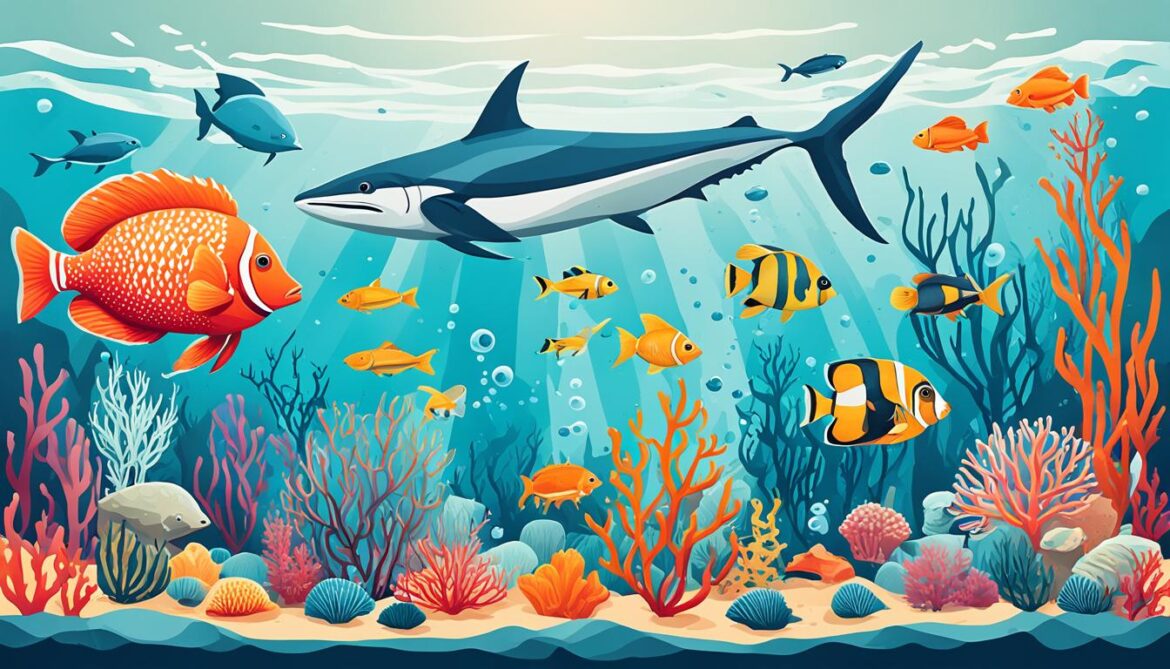
The increasing occurrence of hypoxia poses significant challenges to Baltic Sea biodiversity. Changes in water quality disrupt the delicate balance of marine life, affecting the distribution and abundance of phytoplankton, zooplankton, benthic fauna, and fish species. These changes have ripple effects throughout the food web and can ultimately impact the overall health and resilience of the ecosystem.
Climate change intensifies the existing threats to the Baltic Sea. With rising sea levels and changing nutrient loads from land, the situation becomes even more critical. The combination of climate-related factors and human activities, such as the introduction of invasive species, further complicates the conservation and management of marine ecosystems in the region.
“The impacts of climate change on the Baltic Sea are a stark reminder of the urgent need for sustainable environmental practices and the protection of marine biodiversity. It is essential to address eutrophication, reduce nutrient loads, and promote measures that mitigate climate change to safeguard this unique and fragile ecosystem.” – Dr. Anna Kovalainen, Marine Biologist
Eutrophication and Hypoxia
Eutrophication, resulting from nutrient enrichment, triggers excessive algae blooms that deplete oxygen levels in the water, leading to hypoxia. As oxygen concentrations decrease, marine organisms struggle to survive, endangering the delicate balance of the ecosystem.
Nutrient Loads and Water Quality
Excessive nutrient loads, primarily from agricultural runoff and wastewater discharge, contribute to the degradation of water quality in the Baltic Sea. High nutrient concentrations lead to algal overgrowth, which depletes oxygen levels and disrupts the ecosystem’s natural equilibrium.
Climate Change and Water Temperature
Climate change-driven increases in water temperature have wide-ranging effects on the Baltic Sea’s biodiversity. Some species may benefit from warmer waters, while others may struggle to adapt or face increased risks of extinction. Changes in temperature can disturb the reproduction cycles, migration routes, and feeding patterns of marine species.
Conservation and Management Challenges
The impacts of climate change on the Baltic Sea’s marine biodiversity present significant challenges for conservation and management efforts. Key focus areas include reducing nutrient pollution and implementing sustainable agricultural practices to mitigate eutrophication. Additional measures involve promoting ecosystem-based management approaches, enhancing marine protected areas, and monitoring the spread of invasive species.
Vulnerabilities and Adaptation Strategies for Terrestrial Biodiversity
Terrestrial biodiversity in Finland faces several vulnerabilities that threaten its long-term survival. These vulnerabilities arise from habitat loss, genetic limits to adaptation, and the impacts of climate change. As habitats shrink and degrade, many species face the risk of extinction. Some species, particularly those in mountain-tops, islands, and capes, have limited possibilities for geographical expansion, making them especially vulnerable to habitat loss.
Additionally, genetic limits to adaptation further compound the challenges faced by terrestrial biodiversity. While some species may possess remarkable genetic diversity that enables them to adapt to changing conditions, others have more limited genetic variations, making them less adaptable to environmental changes. This genetic constraint reduces their chances of survival in the face of evolving threats.
Climate change also poses a significant risk to terrestrial biodiversity. Rising temperatures and shifting weather patterns alter ecosystems and disrupt the delicate balance of species interactions. As a warming climate affects the distribution of species and disrupts ecological processes, terrestrial biodiversity faces increased challenges. The impacts of climate change are particularly felt by species that rely on specific habitat conditions or have limited mobility.
Management of Game Resources in a Warming Climate
In addition to habitat loss and genetic limitations, the management of game resources becomes increasingly important in a warming climate. One such example is the management of elk populations. As climate conditions change, elk populations may experience shifts in their distribution and behavior. Proactive management strategies need to consider these changes and ensure the sustainable management of game resources to maintain balance and protect biodiversity.
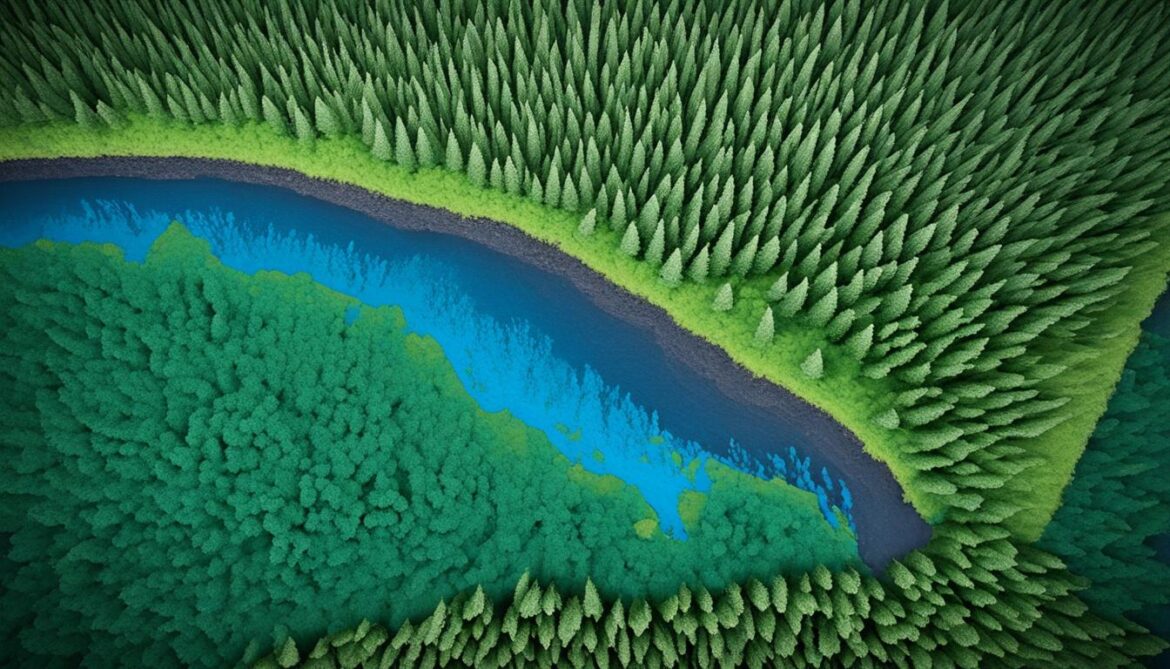
Adaptation Strategies for Terrestrial Biodiversity
Addressing the vulnerabilities faced by terrestrial biodiversity requires the implementation of effective adaptation strategies. One key strategy is the creation and maintenance of protected areas. By establishing protected areas, we can safeguard critical habitats and provide a refuge for endangered species.
Ecological interconnections are another crucial adaptation strategy. By preserving and restoring ecological corridors, we can enhance the movement and gene flow of species, enabling them to adapt to changing environments. These interconnections facilitate the dispersal of species, reduce genetic isolation, and promote resilience in the face of environmental challenges.
Furthermore, proactive management of species and their habitats is vital for promoting the long-term survival of terrestrial biodiversity. This involves monitoring and mitigating threats, implementing conservation measures, and fostering collaboration among researchers, land managers, and local communities. By actively managing and restoring habitats, we can support the adaptive capacity of species and enhance their chances of survival.
Conclusion
Finland’s biodiversity conservation is of paramount importance in the face of significant threats. With nearly 12 percent of species considered threatened, urgent action is needed to protect and preserve the country’s diverse flora and fauna. The negative impacts of climate change and habitat changes have disrupted species diversity and distribution patterns, imperiling their long-term survival.
Effective conservation efforts, such as the establishment of protected areas and the implementation of conservation strategies, play a crucial role in mitigating these threats. However, sustaining and enhancing these efforts is vital to address the ongoing challenges. Further action is required to confront climate change’s impact, safeguard habitats, and promote the effectiveness of conservation initiatives.
By prioritizing Finland’s biodiversity through continued conservation and proactive measures, we can secure a future where both natural and human communities thrive. Through collaborative efforts and a steadfast commitment to biodiversity preservation, we have the opportunity to restore and maintain our environment’s delicate balance. Together, we can create a sustainable future that ensures the resilience and richness of Finland’s unique flora and fauna for generations to come.




